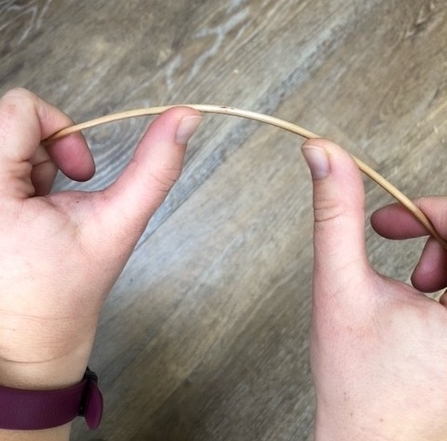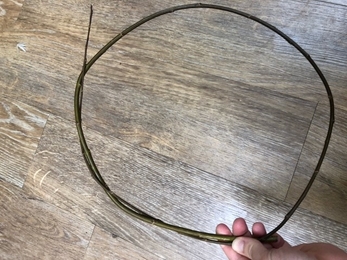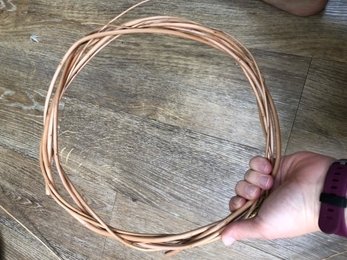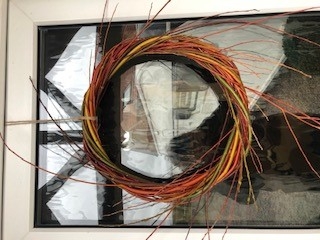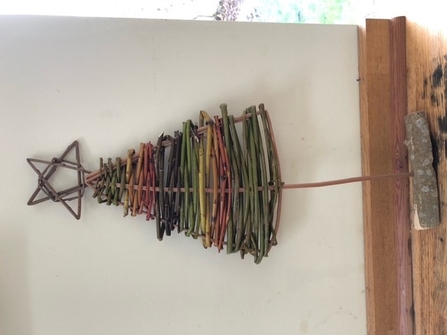Willow is such a wonderful material to work with. I must confess to becoming increasingly mesmerized by it over the last year. As a child, ‘weeping’ willows were my favourite type of tree – I loved the natural den space underneath their branches. Enclosed in that greenery I could read for what felt like hours or just watch their branches sway in a summer breeze. It’s only recently that I’ve realized there are over 400 different species of willow in the UK - their diversity and versatility when it comes to crafting has been a revelation.
I’ve also learnt that Willow for crafting comes in a variety of forms. ‘Buff’ willow has been boiled to remove its bark and dried, leaving it with a tan colour. This willow needs to be soaked and ‘mellowed’ before use and isn’t quite as pliable as ‘green’ fresh cut willow. It does have the advantage of knowing what it will look like when it re-dries after weaving and it can make sharper corners. It also makes an evocative creaking noise that makes me think of being on a boat, and is beautifully soft to the touch when worked. ‘Green’ willow, despite the name, can come in a rainbow of colours and can bend without breaking into extreme angles (if thin enough). In recent weeks I’ve been fortunate to work with both when making wreaths with different groups.
If you have access to willow this is a calming, mindful, activity to have a go at during this busy time. The same method works for fresh cut willow or ‘buff’ willow which you can get from some garden centres.


